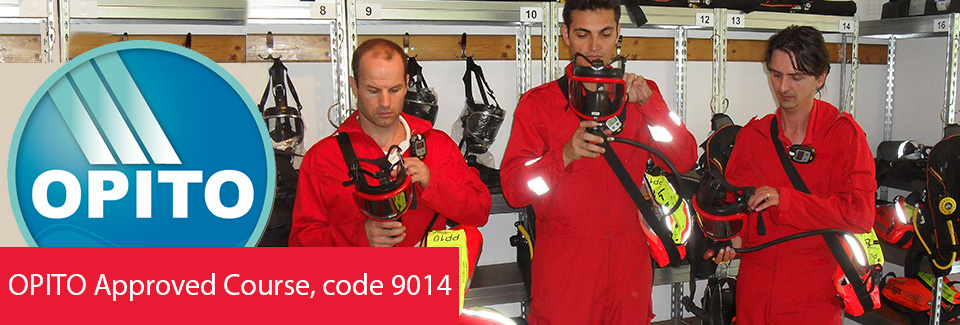
Basic H2S Training
The OPITO Basic H2S Training standard covers the emergency response competency requirements and provides details of training required for personnel working in potential H2S environments. This training covers the characteristics of hydrogen sulphide gas and the potential physiological effects of exposure as well as the use of H2S detection equipment and escape breathing apparatus.
Target Group for the H2S
The Target group is personnel that are, or could be, working in an environment that could become contaminated by H2S gas.
Delegate pre-requisites for the H2S
No prerequisites are required.
Physical and stressful demands of the H2S
Training and/or assessment activities contained within this Standard may include physically demanding and potentially stressful elements. All personnel who participate in such activities must be physically and mentally capable of participating fully.
Before be accepted on the Course, the candidate will present:
a. a valid, current offshore medical certificate or similar
b. a valid medical certificate for aviation or marine personnel
Duration of the H2S
Tre course duration is 4 hours.
Aim of the H2S
The aims and objectives of the training are to ensure that the delegate gains the required knowledge and understanding of the particular hazards and properties of H2S, and appropriate emergency response actions to take should a H2S related incident arise.
Learning outcomes of the H2S
To successfully complete this training delegates must able to explain:
1. Hydrogen sulphide – how it is formed and where it is found;
2. Other names used to describe H2S;
3. Properties and characteristics of H2S;
4. Parts per million (ppm) as a measurement parameter;
5. Occupational exposure limits to H2S;
6. Factors affecting individual susceptibility to H2S;
7. Types of detector equipment;
8. Types of respiratory equipment;
9. Pre-use checks of personal detection devices and EBA.
To successfully complete this training delegates must able to demonstrate:
10. Operating personal H2S detection equipment (including checks);
11. Responding to an alarm;
12. Donning & operating (including checks) an escape breathing apparatus (EBA) with a mask within 30 seconds;
13. Donning & operating (including checks) an EBA with a hood within 30 seconds;
14. Connecting to a pressurised cascade breathing system with an activated EBA which has been donned correctly;
15. Disconnecting from a pressurised cascade breathing system with an activated EBA which has been donned correctly.


